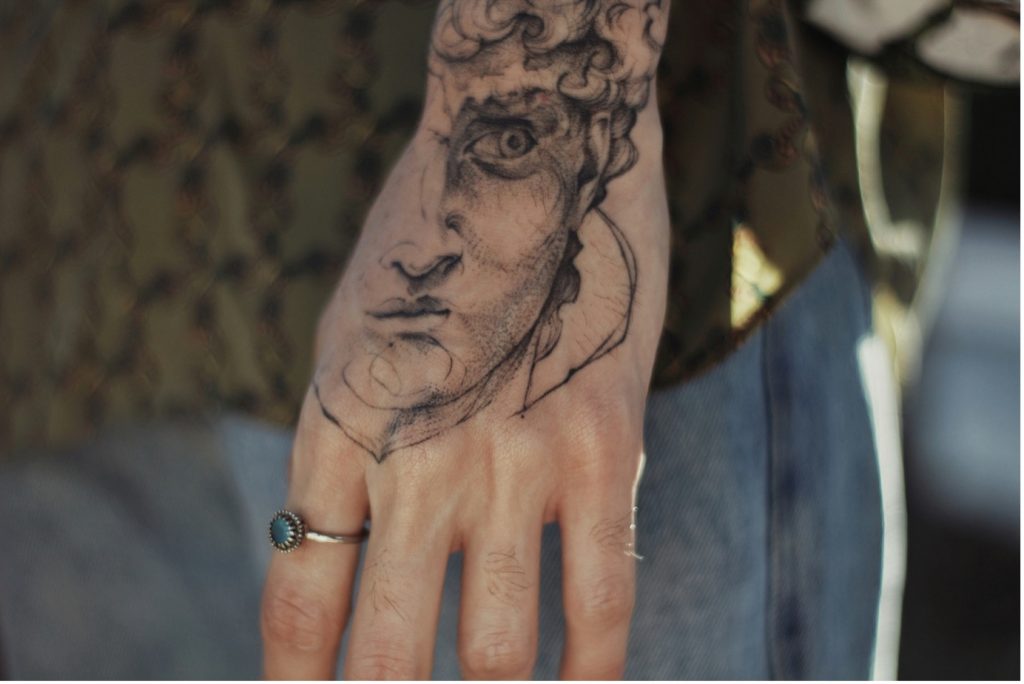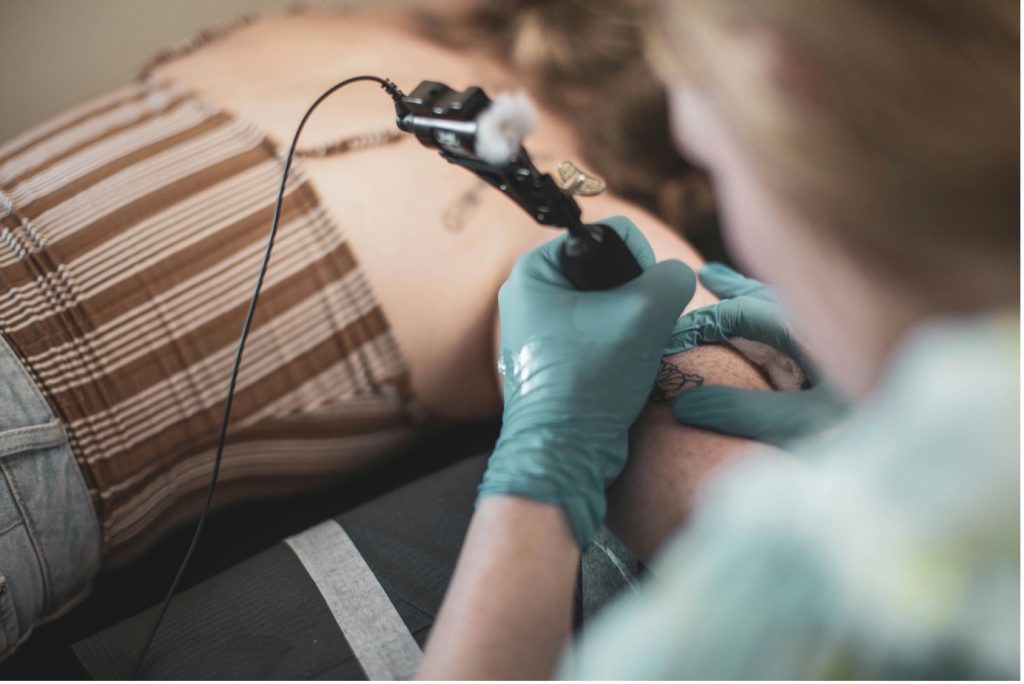We are all aware that tattoos have undergone a significant evolution! From ancient inscriptions to contemporary works of art, they have surpassed their status as simple symbols or adornments. In the present day, a significant number of individuals view them as a bona fide form of art.
However, what are the reasons behind this perception? Let’s delve into the world of tattooed self-expression and examine the factors that contribute to its artistic nature.

Tattoos as a Form of Personal and Cultural Expression
Consider this: your body serves as an empty surface, and tattoos serve as your means of illustrating a narrative upon it. They have the capacity to symbolize your interests, convictions, cultural background, or even cherished relationships.
The representation of strength can be embodied by a formidable dragon, while an admiration for nature can be conveyed through the depiction of delicate flowers. Likewise, intricate tribal patterns have the ability to establish a profound connection with one’s ancestral roots. Similar to any other form of artistic expression, tattoos provide a profoundly personal means of self-representation.
This form of individual self-expression also transcends cultural boundaries. For centuries, traditional tattoos have served as a means of commemorating significant life events, indicating social standing, or signifying membership within a particular group.
Ranging from the elaborate Maori moko to the daring Borneo tattoos, these symbols convey narratives about an individual’s role within their society, akin to how artwork mirrors the principles and convictions of a culture.

The Historical Context of Tattoos as Art
Tattoos possess an extensive historical background that spans across numerous millennia. Ötzi the Iceman, an ancient, preserved body unearthed in the Alps, exhibits tattoos that can be traced back to 3200 BC. These initial symbols were probably employed for functional or ceremonial intentions. However, as societies progressed, the artistic dimension of tattooing also evolved.
The Role Of Tattoos In Ancient Civilizations
In addition to being a form of personal expression, tattoos held great importance within certain ancient cultures. Tattoos were utilized by the ancient Egyptians as a means of embellishment and potentially for religious intents. In the case of Japanese tattooing, also known as irezumi, a rich and intricate chronicle exists, characterized by unique artistic styles and symbolic representations.
Throughout Polynesia, the art of tattooing commanded great reverence as an esteemed form of expression, where elaborate patterns served to reflect social standing and deeply rooted spiritual convictions. These past illustrations serve to exemplify the enduring perception of tattoos as vehicles for artistic ingenuity and the preservation of cultural heritage over countless generations.
These illustrations showcase the way in which tattoos surpass mere embellishment, evolving into an enduring aspect of an individual’s persona, intricately intertwined within the societal tapestry. Beyond its visual appeal, this form of artistic expression carried profound cultural and societal significance.
Evolution of Tattooing Techniques
Similar to all forms of artistic expression, the art of tattooing has experienced transformation throughout history. In its early stages, this craft relied on piercing the skin using sharp instruments and manually applying pigments. With advancements in technology, there was a corresponding evolution in tattooing tools. Needles underwent refinement, while the development of new inks enabled the achievement of greater intricacy and vibrancy.
The emergence of the electric tattoo machine during the latter part of the 19th century completely transformed the field. It allowed for faster and more accurate application, thereby expanding possibilities for artistic expression across various styles. In the present day, tattoo professionals employ state-of-the-art tools and an extensive range of hues to craft breathtaking and elaborate designs.

Artistic Elements in Tattooing
So, what precisely contributes to the artistic nature of a tattoo? Let’s analyze and deconstruct some fundamental components:
Design and Creativity: A high-quality tattoo extends beyond mere replication of an image. It originates from the artist’s inventiveness and expertise. They take into account elements like composition, equilibrium, and fluidity to produce an aesthetically pleasing artwork that harmonizes with the individual’s physique.
Styles and Techniques: Different artistic styles and techniques are inherent in tattooing, similar to those found in painting or sculpture. Ranging from realism and black and grey to watercolor and traditional Japanese, each style entails a distinct perspective and artistic method.
The Artistry Behind Tattooing
A proficient tattoo practitioner not only administers ink but also transforms a concept into reality on the surface of the skin. They possess knowledge of color principles, shading methods, and human anatomy to produce an enduring work that appears flawless and visually appealing.
The Craft Of Tattoo Artists
Being a tattoo artist extends beyond artistic ability. It necessitates a considerable degree of technical proficiency and exactitude. A steady hand, extensive comprehension of hygiene and sterilization practices, as well as the capability to comprehend and interpret a client’s artistic vision are all essential requirements.
The finest tattoo artisans consistently engage in ongoing education and development. They stay abreast of emerging techniques, conduct trials with various styles, and enhance their expertise. The commitment to artistic craftsmanship is what elevates the art of tattooing beyond simple adornment.

Transforming Skin Into a Living Canvas
In contrast to a painting displayed on a wall or a sculpture showcased in a museum, a tattoo integrates itself into an individual. It transforms into a dynamic canvas that accompanies them everywhere they journey. The enduring nature of tattoos contributes an additional dimension to their artistic worth. They symbolize commitment and feature narratives permanently etched onto the skin, designed to be observed and admired throughout one’s lifetime.
To Sum Up…
Tattoos extend beyond ink embedded in the skin. They encompass a potent means of individual and societal articulation, possessing an extensive heritage spanning millennia. The progression of methods, starting from fundamental implements to sophisticated apparatus, has facilitated a broader scope for artistic representation.
Proficient tattoo artists employ their imaginative aptitude and technical prowess to conceive and administer remarkable artworks that integrate an array of styles and methodologies. In addition to possessing artistic skills, tattoo artists must demonstrate a strong commitment to cleanliness, accuracy, and ongoing education.
Ultimately, the art of tattooing involves the transformation of skin into a vibrant canvas that forever bears a distinctive narrative and creative perspective. The combination of individual self-expression, cultural importance, artistic value, and proficient craftsmanship is what transforms tattoos into a form of art!
_________________________________
Author’s bio:
Jacob Pullman is a former tattoo artist turned into a consultant-enthusiast-writer-educator. A change of career, before he started writing, he got a degree in PR and communications. He is passionate about traveling and exploring the world and cultures, visiting all those funky museums as a modern art lover.
His ultimate goal is to spread knowledge about relationships (but only theoretically, he is still single), a healthy lifestyle, body art, and, of course, everything related to tattoo art. That’s how he went deep into digital marketing, working with Skin Design Tattoo to educate and share his knowledge and experience.


